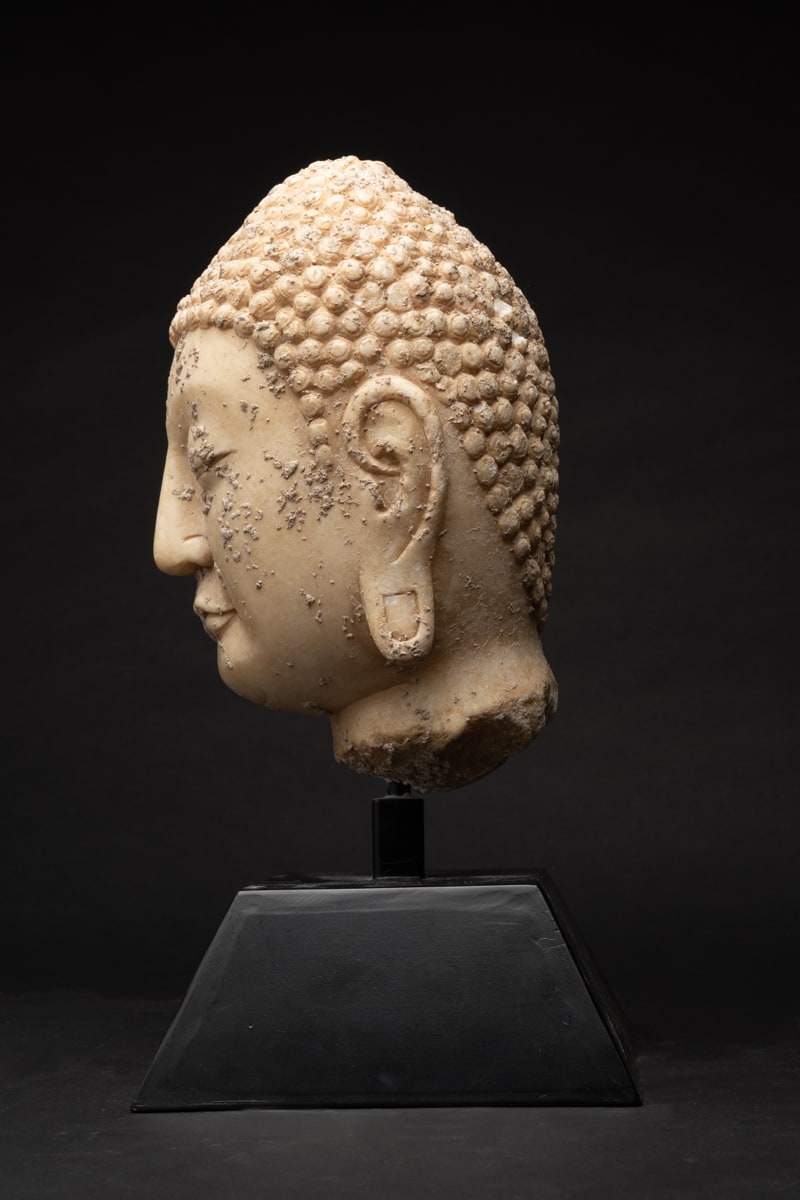Northern Qi or Sui Marble Head of a Buddha, 550 CE - 618 CE
Marble
height 29.2 cm
height 11 1/2 in
height 11 1/2 in
HK.2038
Further images
This is a marble sculpture of the head of a Buddha. Peacefully gazing downwards, the figure has a serene facial expression, radiating an approachable and amiable aura. From the positioning...
This is a marble sculpture of the head of a Buddha. Peacefully gazing downwards, the figure has a serene facial expression, radiating an approachable and amiable aura. From the positioning of the head, it is highly plausible that it was originally a standing figure.
Standing Buddha is a prominent form of sculpture under the patronage of the Northern Wei imperial family, who commissioned the carving of rock caves in Longmen and Gongxian, both in Henan province, in the first quarter of the 6th century, which typically show seated or standing Buddhas flanked by two bodhisattvas. Besides these massive stone carvings in cave temples, many free-standing steles, also often with two bodhisattva figures on either side of a central Buddha statue, were commissioned in that century, which followed the artistic language introduced by these grand Buddhist cave sculpture projects, which exerted an overwhelming influence on Chinese sculpture of the period in general.
This sculpture shows distinctive features of both Northern Qi and Sui styles. The spacious distribution of facial features denotes a distinctive Sui style. Whereas the waveform shaped lips and the corn shaped hair rolls still adhere to Northern Qi aesthetic standard.
Standing Buddha is a prominent form of sculpture under the patronage of the Northern Wei imperial family, who commissioned the carving of rock caves in Longmen and Gongxian, both in Henan province, in the first quarter of the 6th century, which typically show seated or standing Buddhas flanked by two bodhisattvas. Besides these massive stone carvings in cave temples, many free-standing steles, also often with two bodhisattva figures on either side of a central Buddha statue, were commissioned in that century, which followed the artistic language introduced by these grand Buddhist cave sculpture projects, which exerted an overwhelming influence on Chinese sculpture of the period in general.
This sculpture shows distinctive features of both Northern Qi and Sui styles. The spacious distribution of facial features denotes a distinctive Sui style. Whereas the waveform shaped lips and the corn shaped hair rolls still adhere to Northern Qi aesthetic standard.
22
of
22













